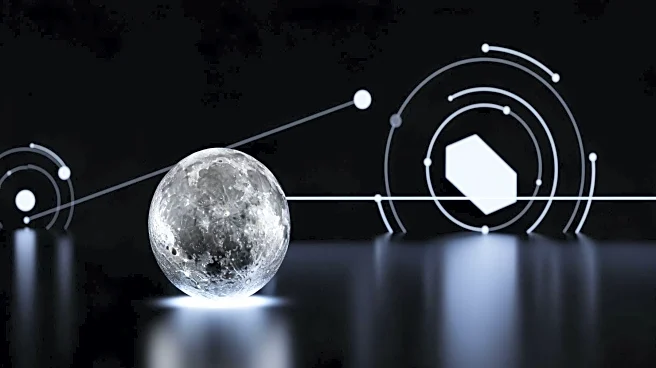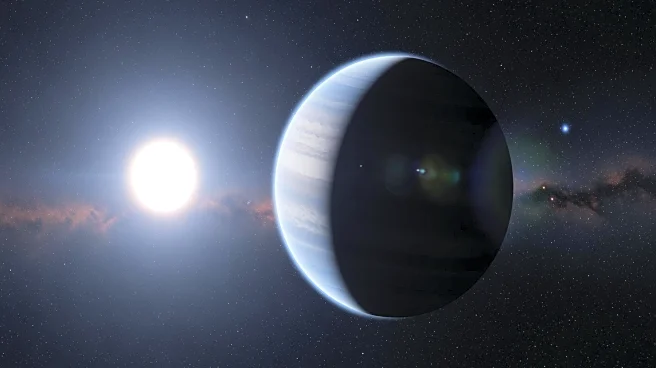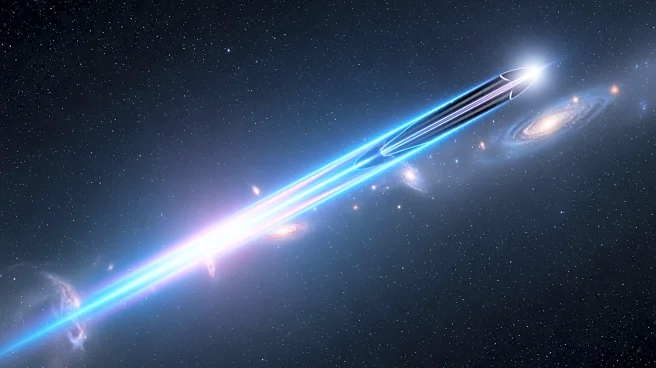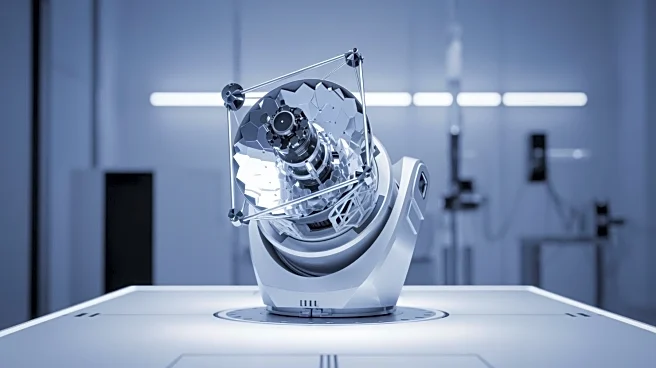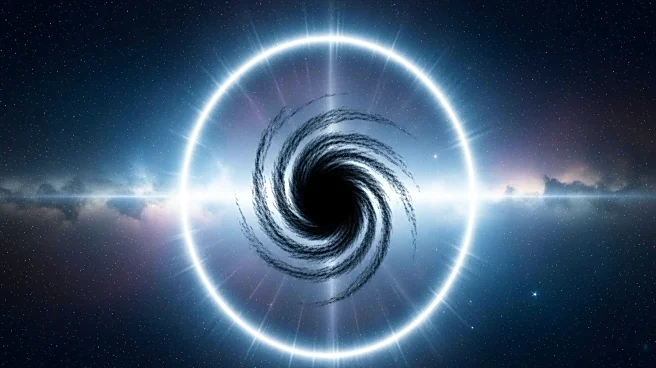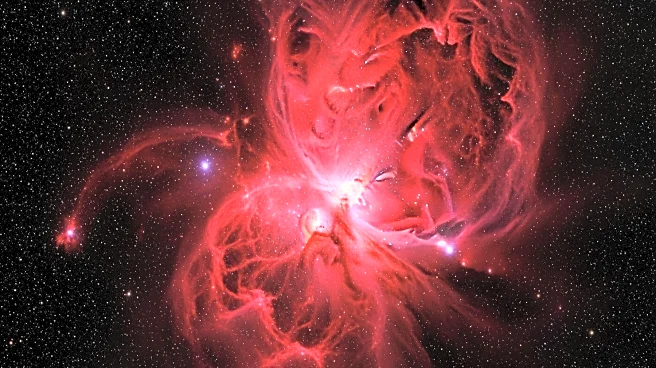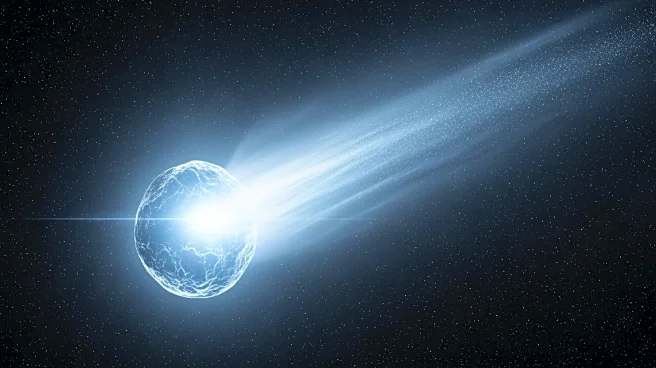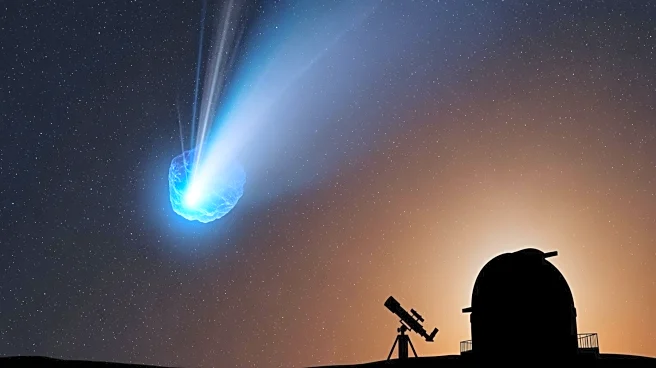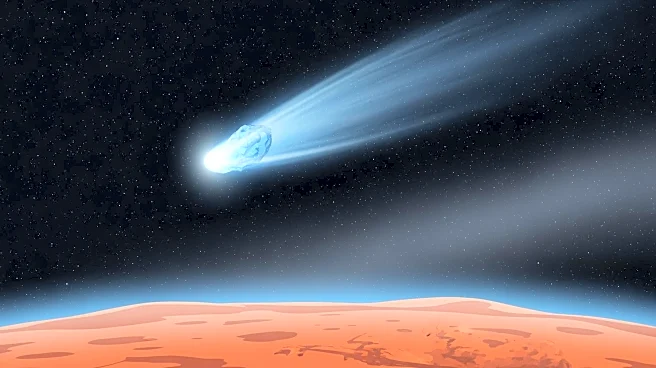What's Happening?
NASA's James Webb Space Telescope has captured unprecedented details of the Red Spider Nebula using its Near-InfraRed Camera (NIRCam). Released on October 26, 2025, the image reveals the full extent of the nebula's outstretched lobes, which resemble the 'legs'
of a spider. These lobes, depicted in blue, are traced by light emitted from H2 molecules, consisting of two hydrogen atoms bonded together. The lobes are closed, bubble-like structures extending about 3 light-years each, inflated by outflowing gas from the nebula's center over thousands of years. This high-resolution imaging and spectroscopy provide new insights into the structure and composition of the nebula.
Why It's Important?
The new imagery from the James Webb Space Telescope offers significant advancements in the understanding of planetary nebulae. By revealing the intricate details of the Red Spider Nebula, scientists can better comprehend the processes involved in the formation and evolution of such celestial bodies. This contributes to broader astrophysical research, enhancing knowledge about the lifecycle of stars and the dynamics of interstellar matter. The findings may also aid in refining models of nebular formation and expansion, impacting future studies in astrophysics and space exploration.
What's Next?
The James Webb Space Telescope will continue to explore other celestial phenomena, using its advanced imaging capabilities to uncover more details about the universe. Researchers may focus on analyzing the data collected from the Red Spider Nebula to develop more comprehensive models of nebular dynamics. Further studies could lead to new discoveries about the chemical composition and physical processes within nebulae, potentially influencing future missions and scientific inquiries in space exploration.
Beyond the Headlines
The detailed observation of the Red Spider Nebula by the James Webb Space Telescope highlights the importance of advanced technology in space research. The ability to capture high-resolution images of distant celestial objects opens new avenues for scientific exploration and understanding. This technological advancement underscores the collaborative efforts of international space agencies, including NASA, ESA, and CSA, in pushing the boundaries of space science and fostering global cooperation in astronomical research.


